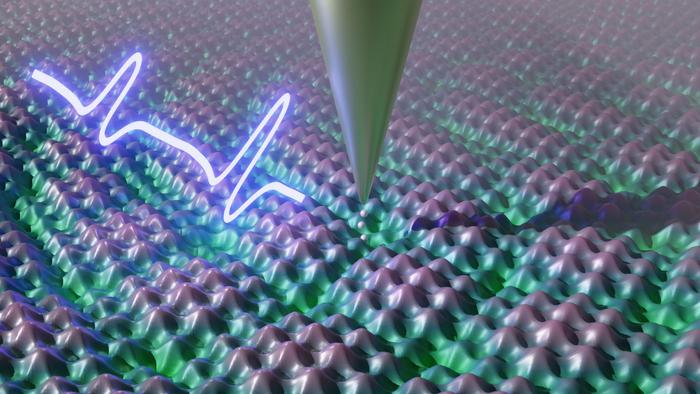
Researchers on the University of Stuttgart have developed a groundbreaking quantum microscopy method that enables for the visualization of electron actions in gradual movement, a feat beforehand unachievable. Prof. Sebastian Loth, managing director of the Institute for Purposeful Matter and Quantum Applied sciences (FMQ), explains that this innovation addresses long-standing questions on electron conduct in solids, with important implications for creating new supplies.
In standard supplies like metals, insulators, and semiconductors, atomic-level modifications don’t alter macroscopic properties. Nevertheless, superior supplies produced in labs present dramatic property shifts, comparable to turning from insulators to superconductors, with minimal atomic modifications. These modifications happen inside picoseconds, straight affecting electron motion on the atomic scale.

THE IMAGING TIP OF THE TIME-RESOLVING SCANNING TUNNELING MICROSCOPE CAPTURES THE COLLECTIVE ELECTRON MOTION IN MATERIALS THROUGH ULTRAFAST TERAHERTZ PULSES. PHOTO CREDIT: © SHAOXIANG SHENG, UNIVERSITY OF STUTTGART(FMQ)
Loth’s group has efficiently noticed these fast modifications by making use of a one-picosecond electrical pulse to a niobium and selenium materials, learning the collective movement of electrons in a cost density wave. They found how single impurities can disrupt this collective motion, sending nanometer-sized distortions by way of the electron collective. This analysis builds on earlier work on the Max Planck Institutes in Stuttgart and Hamburg.
Understanding how electron motion is halted by impurities may allow the focused improvement of supplies with particular properties, helpful for creating ultra-fast switching supplies for sensors or digital elements. Loth emphasizes the potential of atomic-level design to impression macroscopic materials properties.
The revolutionary microscopy technique combines a scanning tunneling microscope, which gives atomic-level decision, with ultrafast pump-probe spectroscopy to realize each excessive spatial and temporal decision. The experimental setup is very delicate, requiring shielding from vibrations, noise, and environmental fluctuations to measure extraordinarily weak alerts. The group’s optimized microscope can repeat experiments 41 million occasions per second, making certain excessive sign high quality and making them pioneers on this discipline.
Filed in . Learn extra about Science.
This Article is Sourced Fromwww.ubergizmo.com






